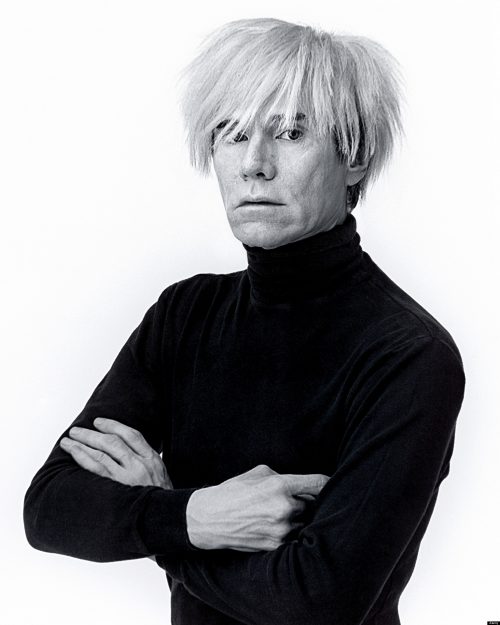
By Lucia Adams
Not since King Tut have I seen such long lines posing with the lions at the Art Institute, waiting and waiting to see the Andy Warhol exhibition. His face, his name, his pictures, his brand cozily familiar from newspapers, magazines, movies, soaps, Calvin Klein shirts, the most important artist of modern times— maybe ever!!!!. An artist for the people, finally, celebrities, news, three life size Elvis’s with smoking guns, Jackie Kennedy’s nine-image grief, 32 Campbell soup cans — in all their glory.
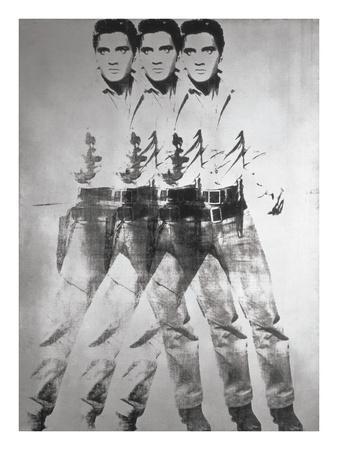
I lectured about Pop Art its monotonous, repetitious strip mall sameness in the 60s and 70s, the projector’s carousels bursting with the headache- inducing images that ignored and reversed the great Western tradition of art from Giotto and Duccio, subversive with savage mockery of commodity culture capitalism and consumerism. The university students loved it and if truth be told during the Vietnam era so did I — somewhat. In 2019 that dimension is gone and we are left with big flat childish Crayola colored pictures. Not paintings. Pictures.
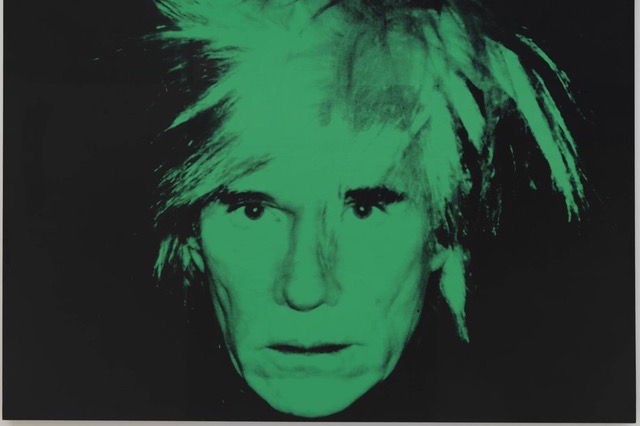
Warhol, like other Pop “icons”, had his roots in Marcel Duchamp’s brand of Dada, he who declared in 1913 that a bottle rack, and in 1916 a urinal were fine art — because he said they were. The Anarchist of the Absurd defaced Mona Lisa with an obscene acronym L.H.O.O.Q. and a moustache. Nicky Haslam, who met Warhol, then a commercial illustrator at Vogue’s shoe department, in 1962 and declared he revolutionized how art was perceived, off by half a century but true; he thought him crazy, off- the- wall — until Leo Castelli (Leo Knausz the cosmopolitan art salesman) exhibited his work. Instant celebrity. Irresistible.
The press went wild though always with suspicions that Warhol was a monumental joke…an issue never resolved. Haslam was wary of the canny, scrupulously organized, calculating businessman’s pose of a faux innocent. After his death in 1987 it came to light that from the 70s on his productions were made by others — offsite in studios he never visited from templates which he later signed as his, a logical extension of his original idea that pictures should be in multiples. So how authentic are these “masterpieces” in the exhibition? Provenance? Is there even such a thing as an authentic Warhol? Remember he declared what you see is what you get.

From A to B and Back Again (the title of his 1975 memoir) was organized by the Whitney two years ago and has also travelled to San Francisco. Warhol’s first retrospective since 1989 it was curated by Whitney staffer Donna de Salvo who chronologically assembled 350 of his Greatest Hits— from the gigantic big screen Mao, the Brillo boxes, the Marilyns, the flower paintings ( like cheap awnings Warhol said) hammers and sickles, skulls, electric chairs and other Disaster Paintings, from early drawings to classic Pop silkscreens, a nod to the films, videos, media ventures, and large final works such as the 1986 Camouflage Last Supper which some saw as a riff on abstraction but others a gimmick. No comment.
In Chicago with the primary support of Ken Griffin and other important art loving donors the exhibition adds to the mix of beans and bandshells which have replaced retail of State Street as the main tourist attraction of the city. Back in the Rubloff era there were heated discussions about the relevance of the Art Institute and now we have the answer —crowd pleasing art!
When Warhol arrived in New York in 1947 Pop was just emerging jumping on the bandwagon, inspired by Roy Lichtenstein, declared himself a gallery artist with his multiple Coca Cola silkscreen. Genius choice of a symbolic image, the original insight pursued to the very end! At the time also born was his initial Big Idea, never abandoned, of the brain dead robot making art without affect, without emotion using reproductive technology.
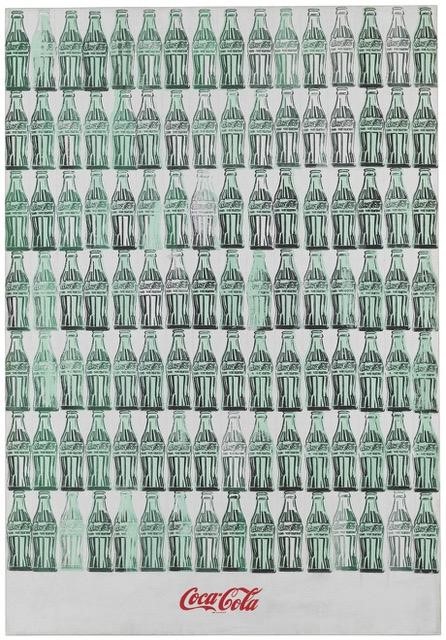
Gone was the exhausting demand on the viewer of Abstract Expressionism, trying to fathom what Rothko or Arshile Gorky or Franz Kline, even Pollack was supposed to “mean.” With Cow Wallpaper, there was no mystery.
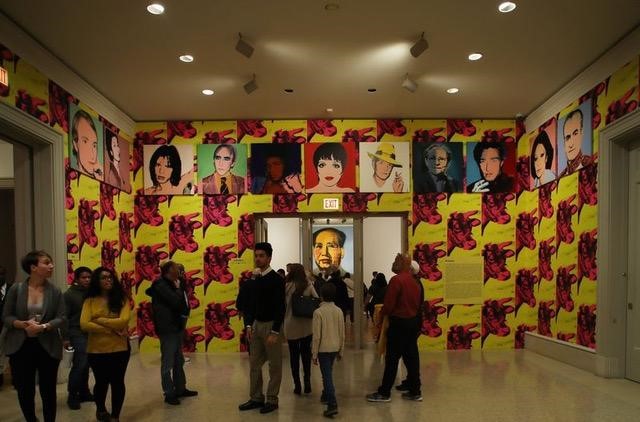
One wonders if Warhol had read Susan Sontag’s Against Interpretation which rejected the fallacious, complicated readings that engulf an artwork whose true meaning should be primitive and magical. She challenged Marx and Freud and every other “aggressive and impious” reading into the image. As Warhol noted, “Nobody really looks at anything for long — it’s too hard.” The contributors to the Yale catalogue for the exhibition have missed the Warholian point and seek meaning in the whole Warhol Package.
My favorite picture, so exquisite in its profound absurdity is the Tunafish Disaster laugh- out- loud blackly humorous. I clearly remember the headline from Newsweek blaring how two Ohio housewives ate contaminated canned tuna — and died!!! Exit my mother’s delicious tuna salad with Martini olives, enter Ionesco’s incomprehensible Theater of the Absurd.

The endless celebrity portraits from Paul Anka to Pia Zadora (the Queen is particularly absurd) are like fetishes with their concentrated focus on a face filling the space with a talismanic stupidity. Mike Nichols got it. In Working Girl on the wall of the luxe townhouse of the rich snobbish corporate thief, Katherine Parker, is her gigantic four part portrait in the style of Warhol — with a big blotch on the tip of her nose
Then there is his writing (with Pat Hackett and whoever else actually wrote it) and the comedic premise of “nothing”, not the Sartrean futility of human endeavor, but of no involvement or emotion — autistically speaking “I’m nobody.” Frightening, creepy, as those films Haslam, who wrote for Interview, thought pure genius such as the eight hour focus on the top floors of the Empire State Building. Madness beyond insouciance like the Factory and collaborative multimedia events, Exploding Plastic, Velvet Underground.
After being shot by Valerie Solanis Warhol segued from the alternatives and cultivated commissions from the global rich and famous like 36 Ethel Sculls unaware she was being ridiculed. In the 70s and until he died in 1987 he tediously chronicled his life hanging out with “everybody”, Bianca Jagger (“God, she’s dumb”), Jackie O (“thinks she’s so grand she doesn’t even owe it to the public to have another great marriage to somebody big”), Yoko (unrepeatable), the humor definitely passé today.

The big face in the frame portraits are precursors of Facebook and last year someone set up a Twitter feed of the diaries, 140 characters of gossip chirps, sound bites. Today Warhol would no doubt have been a regular on Saturday Night Live.



